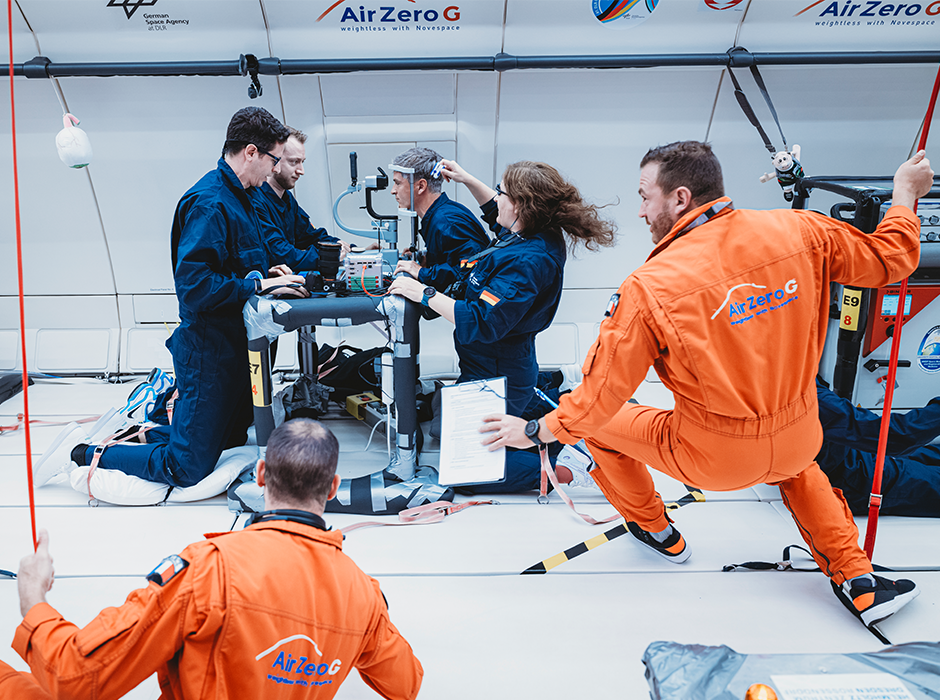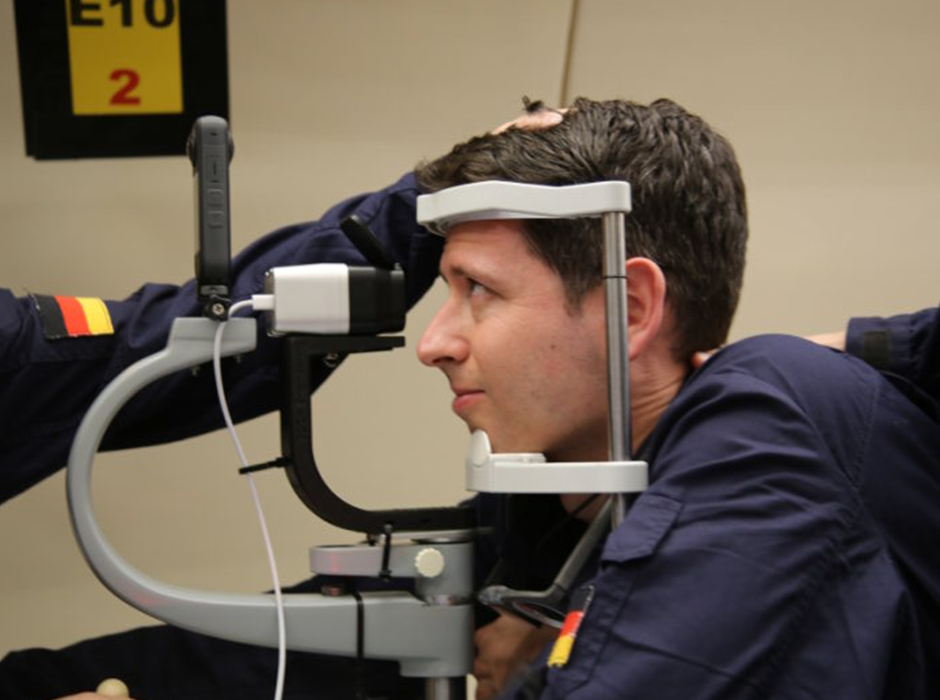
Dr Francesc March, left, undertakes a tear film assessment in microgravity during a parabolic flight. CREDIT: NOVESPACE AND DLR
An Otago ophthalmologist has gone to the edge of Earth’s atmosphere for his ocular research.
Dr Francesc March, of the Department of Medicine, has spent the past two years working on an aerospace project in France into how eyes are affected by microgravity, particularly dry eye disease (DED).
“Our research is the first to investigate the disease in space-like conditions. We use parabolic flights, which create short periods of microgravity through precise flight patterns, as a precursor to orbit-based research,” he says.
DED is a “significant ocular issue” which causes eye irritation, strain and blurred vision.
“It impacts the layers of tears that cover your cornea and occurs when you either don't have enough tears or when they evaporate too quickly,” Dr March says.
It affects about 15 per cent of the population, with a higher prevalence in women and older people, but is also related to daily activities such as eye strain from computer use.
Astronauts are particularly afflicted, with about 30 per cent of them experiencing symptoms during long-term space missions.
Dr March says the zero-gravity environment and the dry, enclosed cabin atmosphere contribute to the development of DED in space.
Several factors are likely involved in the occurrence of DED, including tear film instability and ocular surface inflammation. In microgravity, the tear film is challenged to remain stable and evenly spread due to altered fluid dynamics.
Additionally, the space environment exposes the eyes to floating dust, artificial lighting, and prolonged screen use, which present further risk of damage to the ocular surface. Fluid shifts within zero gravity cause eyelid swelling and disrupted tear drainage, likely leading to tear retention and the buildup of irritants.

Dr Francesc March has been working on an aerospace project looking at how astronauts are impacted by dry eye disease.
“Understanding DED in space will help protect astronauts' eye health but also offer insights into the mechanisms of DED on Earth and could lead to the development of innovative diagnostic and therapeutic solutions for it,” Dr March says.
These could include diagnostic technologies such as infrared imaging to provide non-invasive, portable methods to assess the tear film in real-time, while therapeutic devices such as ocular neurostimulators could stimulate tear production and alleviate DED symptoms at the push of a button.
“These advancements have significant implications for improving eye care on Earth, particularly in remote or resource-limited settings such as rural areas, as well as in space.”
The study team is made up of medical doctors, researchers, and engineers in collaboration with the German Aerospace Center (DLR).
Along with Dr March, the group is led by Dr Timon Ax, a PhD student at Western Sydney University, and Professor Jennifer Craig, a research optometrist in the Department of Ophthalmology at the University of Auckland.
“Interdisciplinary collaboration between space medicine, ophthalmology and engineering is essential for advancing our understanding of DED in space and developing effective interventions.
“Future research is planned, which will focus on other eye conditions, to contribute to the overall improvement of ocular health in space and on Earth.”